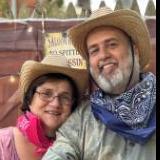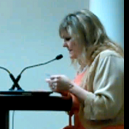Blogs
Dukes Creek Falls
When Your Stomach Would Eat You Alive — a Glimpse of Wonder entry™ —
Dark Wings, Bright Minds — a Glimpse of Wonder entry™ —
When Beauty First Opened Her Eyes — a Glimpse of Wonder entry™ —
When One Voice Speaks Many Languages — a Glimpse of Wonder entry™ —
The Penguins’ Open Path — a Glimpse of Wonder entry™ —
What the Whales Remembered — a Glimpse of Wonder entry™ —
The Wonder That Bends — a Glimpse of Wonder entry™ —

dljbsp in Plant Life
Jehovah — God of Comfort — a Scriptural Consideration entry —
The God Without a Beginning — a Scriptural Consideration entry —
The Quiet Beach and the Sea Turtles — a Glimpse of Wonder entry™ —
Seek Counsel Humbly — a Scriptural Consideration entry —
The Work Beneath the Ache — a Scriptural Consideration —
The Mountains That Reappeared — a Glimpse of Wonder entry™
The Silence That Spoke — a Glimpse of Wonder entry™ —
The Song You Can’t Hold — But That Holds You — a Glimpse of Wonder entry™ —
The Smallest Tick of Time — a Glimpse of Wonder entry™ —
Finding Contentment Amidst Unmet Desires
The Wonder of Simultaneity — a Glimpse of Wonder entry™ —
He Knows. He Promises. He Strengthens. — a Scriptural Consideration entry —
The Questions That Steady Us — a Scriptural Consideration entry —
The Witness in the Storm — a Scriptural Consideration entry —
About JWTalk.net - Jehovah's Witnesses Online Community
Since 2006, JWTalk has proved to be a well-moderated online community for real Jehovah's Witnesses on the web. However, our community is not an official website of Jehovah's Witnesses. It is not endorsed, sponsored, or maintained by any legal entity used by Jehovah's Witnesses. We are a pro-JW community maintained by brothers and sisters around the world. We expect all community members to be active publishers in their congregations, therefore, please do not apply for membership if you are not currently one of Jehovah's Witnesses.



